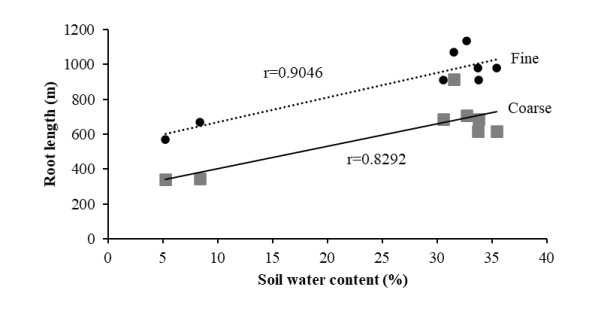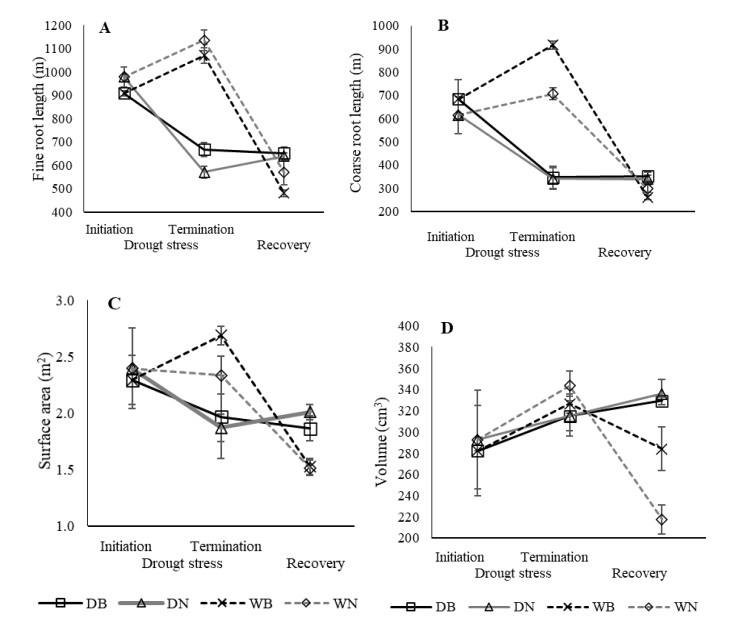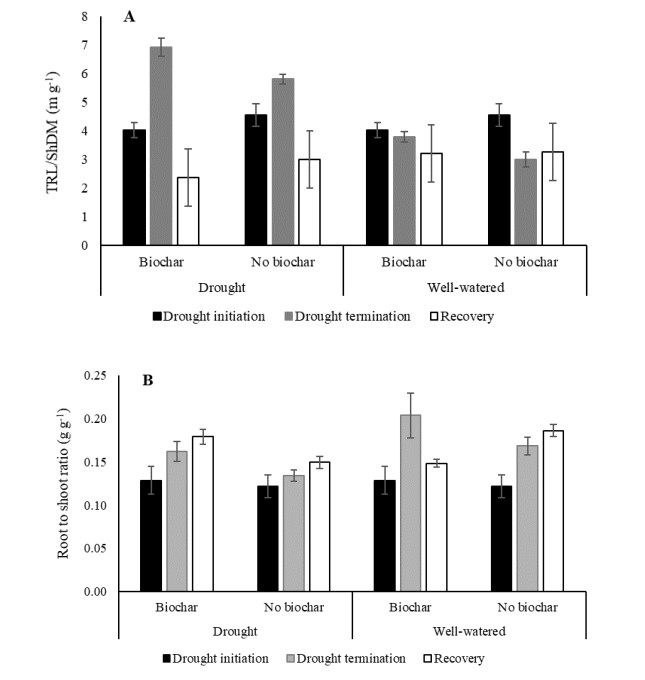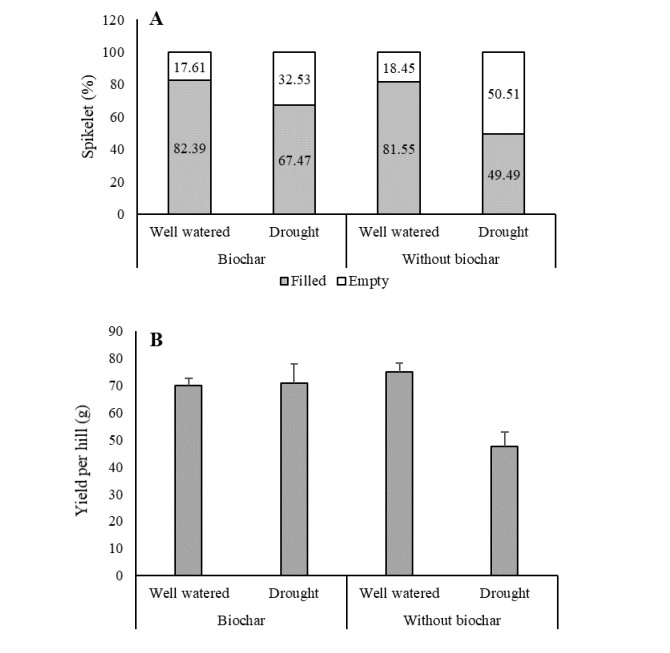A method for early diagnosis of parametric changes in intracellular protein synthesis models (e.g. the p53 protein - mdm2 inhibitor model) is developed with the use of a nonlinear Kalman Filtering approach (Derivative-free nonlinear Kalman Filter) and of statistical change detection methods. The intracellular protein synthesis dynamic model is described by a set of coupled nonlinear differential equations. It is shown that such a dynamical system satisfies differential flatness properties and this allows to transform it, through a change of variables (diffeomorphism), to the so-called linear canonical form. For the linearized equivalent of the dynamical system, state estimation can be performed using the Kalman Filter recursion. Moreover, by applying an inverse transformation based on the previous diffeomorphism it becomes also possible to obtain estimates of the state variables of the initial nonlinear model. By comparing the output of the Kalman Filter (which is assumed to correspond to the undistorted dynamical model) with measurements obtained from the monitored protein synthesis system, a sequence of differences (residuals) is obtained. The statistical processing of the residuals with the use of $\chi^2$ change detection tests, can provide indication within specific confidence intervals about parametric changes in the considered biological system and consequently indications about the appearance of specific diseases (e.g. malignancies)
1.
Introduction
Despite uncontrollable flooding during the rainy season, Indonesia's riparian wetland ecosystem is also regularly exposed to drought problems during the dry season [1,2]. Drought occurrence can seriously reduce rice yield. In the worst scenario, prolonged drought can cause total harvest failure. Drought stress usually occurs during the reproductive stage of the first rice growing season and the early vegetative stage of the second rice-growing season in riparian wetlands in Indonesia [2,3,4]. During the reproductive stage, drought inhibits the grain filling process, accumulates reserve nutrients during grain development and maturation, and strongly affects quantitative and qualitative yield [5].
An increase in soil water holding capacity could salvage crop productivity under drought stress conditions [6]. Recently, biochar used as soil ameliorant has been considered an alternative solution for improving soil properties, including soil water holding capacity. Biochar is a solid carbon-rich product made from plant biomass via the pyrolysis process in an oxygen-limited environment. Biochar has been reported to improve soil chemical, physical, and biological properties [7].
Rice husk is a vastly available agricultural byproduct in rice producer countries. Approximately 822 million tons were produced annually worldwide and were currently underutilized due to limited recycling options [8]. Conversion of rice husk into biochar can be beneficial for energy production, sustainable waste recycling, carbon sequestration, soil quality improvement, and better plant growth [9]. The previous study proved that rice husk biochar's soil application improved rice growth and yield in riparian wetland soil [10]. The porous structure of biochar improves nutrient and water retention. Biochar application also bring variable effects on plant qualitative and quantitative growth [11].
Numerous studies had reported the significant positive effects of biochar application on root traits. Application of biochar improved root biomass, root morphology, root nutrient concentration, and root-associated microbes [12,13,14]. However, there were limited information about the effect of biochar application on the growth of fine and coarse root. Coarse roots provide anchorage and determine depth of penetration into the soil layers. Fine roots increase the surface area in contact with soil moisture and increase the soil volume that can be explored for water under drought condition [15].
This study's objectives were to evaluate rice husk biochar's effects on soil properties, root and shoot development, and yield in O. glaberrima rice. Regarding root development, this study focused on fine and coarse root growth under drought stress condition during early reproductive stage of rice.
2.
Materials and methods
2.2. Plant material and research location
Rice seeds used in this experiment were RAM 101 accession of O. glaberrima has been reported to have the ability to grow in a wide range of harsh environment [16]. According to Kartika et al [17], RAM 101 has drought tolerance mechanisms associated with leaf morpho-physiological responses, root traits and dry biomass accumulation. The investigation was conducted at Tropical Crop Science Laboratory, Kagoshima University, Japan (31°34'0.01" N, 130°33'0.00" E). The altitude was 6 m above sea level.
2.2. Experimental setup
The experiment was a completely randomized design with three replications per treatment. This research was set up in three phases, i.e., seed germination in an incubator, seedling preparation in a growth chamber, and rice cultivation in a greenhouse. The germination procedure was commenced by soaking the seeds in water for 48 hours. Then, the seeds were placed on wetted paper in the incubator at 28℃. After radicle emergence, germinated seeds were planted in boxes (25 cm × 37 cm × 14 cm) filled with prepared nursery substrate. The growing seedlings were kept in a growth chamber for 14 days. The internal air temperature was maintained at 28 ℃ with a 12 h photoperiod and 200-300 μmol m-2 s-1 light intensity.
The 14-day old seedlings were transferred from the growth chamber to the greenhouse and transplanted to a 10 L pot filled with 7 kg of sandy loam soil. Microclimate within the greenhouse was recorded. Average day and night air temperature were 32 ± 3 ℃ (day) and 18 ± 5 ℃ (night), respectively. The relative humidity was ranged from 70% to 90%. The soil used contained 2.37 g kg-1 organic carbon; 0.029 g kg-1 total N; 11.64 mg kg-1 available P; 0.085 mg kg-1 exchangeable K; 0.36 mg kg-1 exchangeable Ca; 0.0367 mg kg-1 exchangeable Mg; 1.44% water content; soil pH was 6.38; and cation exchange capacity (CEC) of 3.43 cmol kg-1. The soil was thoroughly mixed with 1 g N pot-1, 0.22 g P pot-1, 0.41 g K pot-1 as basal fertilizers.
2.3. Biochar application and drought treatment
Combination treatments of drought stress and biochar application on O. glaberrima were evaluated in the greenhouse. Plants were treated with sufficient water or exposed to drought conditions during the reproductive stage and combined with untreated or treated biochar application at rates of 10.5 g bucket-1, equivalent to 3 tons ha-1, following recommendation based on a previous experiment [10]. Thus, there were 4 combination of treatments including: drought stress with biochar application (DB), drought stress with no biochar application (DN), well-watered with biochar application (WB), and well-watered with no biochar application (WN).
Rice husk biochar was applied by thoroughly mixing it with the sandy loam soil a week before transplanting. Physical and chemical characteristics rice husk biochar used in this study were: particle size ≤1 mm; pH 6.38; contained 290 g kg-1 organic carbon; 0.686 g kg-1 total N; 0.295 g kg-1 available P; 6.519 mg kg-1 exchangeable K; 0.83 mg kg-1 exchangeable Ca; 0.60 mg kg-1 exchangeable Mg; and 32.99 cmol kg-1 cation exchange capacity (CEC).
All plants were watered to maintain saturated water content during the vegetative rice stage. Drought stress treatment started when 100 percent of the panicles have visibly emerged in all plant populations, corresponding to 110 days after transplanting. Watering was stopped until the soil moisture content reached between 5 and 8% (Figure 1). Soil moisture below 10% causes leaf of rice plant starts to roll. Leaf rolling index is used by the International Rice Research Institute as indicator for drought stress in rice plant [17]. It took four days to induce drought stress on rice plants. Afterward, the drought-treated plants were re-watered to allow the plants to recover.
2.4. Analysis of growing substrate
Soil moisture was monitored hourly using Data Logger (Decagon Devices Inc., Em50 Series). The sensor was installed in the center of the pots at a 15 cm depth. The pH of soil-biochar mixtures was measured by mixing 20 g of sample with 50 mL distilled water, while pure biochar was mixed at a ratio of 10 g biochar to 50 mL. The samples were then stirred for an hour, then measured with a pH meter (F-51, Horiba Ltd., Kyoto, Japan). The CEC was determined by the semi-micro Schollenberger method using 1 mol/L of neutral ammonium acetate. Available P was determined using the Truog method, extracted by H2SO4 [0.002 mol L-1, pH 3.0] and measured using spectrophotometer (JASCO V-530 UV-Vis, Artisan Technology Group, Champaign IL, USA) at 710 nm. Soil total N and total C contents were analyzed using a CN analyzer (JM1000CN, J-Science Lab Co, Ltd., Kyoto, Japan).
2.5. Biomass and root analysis
Three plants were destructively sampled from each treatment and were separated into the root, stem, leaf, panicle, and dead biomass. Shoot dry weight was obtained by adding leaf, stem, and panicle dry weight. The roots were carefully washed for characteristic analysis. The roots were arranged in a transparent tray and scanned using Photo Scanner (GT-X830, Seiko Epson Corp., Tokyo, Japan). Root length, root surface area, and root volume were measured using plant root measurement and analysis systems (WinRHIZO, Regent Instruments Inc., Quebec, Canada). Root dry weight was determined after the biomass was oven-dried at 80 ℃ for 72 h.
2.6. Statistical analysis
Effects of drought treatment and biochar application were tested by employing the analysis of variance using statistical analysis software (SAS® University Edition, SAS Institute Inc., Cary NC, USA). Differences among treatment combinations were determined with the Least Significant Difference (LSD) test at P < 0.05. Significant differences in soil chemical characteristics between biochar-treated and non-treated were analyzed using Student's t-test at P < 0.05.
3.
Results
3.1. Soil properties
Soil moisture content indicates the amount of water available in the soil. Well-watered soil steadily maintained moisture content at 30 to 35 percent. Soil water content declined significantly after 2 to 4 days of drought treatment both with and without biochar application; however, soil moisture returned to pre-treated value between 30 to 35 percent after two days of the recovery period, except for drought without biochar treatment. Rapid depletion of water content was observed in soil without biochar application than the biochar applied soil (Figure 1).
Biochar amendment before rice transplanting affected some soil chemical properties. Application of biochar at a rate of 10.5 g bucket-1 (3 tons ha-1) increased soil pH by 1.09, CEC value from 3.93 cmol kg-1 to 4.94 cmol kg-1, doubled available P, and exchangeable Mg; however, it did not significantly affect concentrations of total C, total N, exchangeable K and exchangeable Ca (Table 1).
Based on soil chemical properties measured after rice plants were harvested, soil water conditions altered biochar application effects (Table 2). CEC and exchangeable Ca were significantly increased in soil amended with biochar after drought stress, but they were not significantly affected under well-watered soil. On the contrary, biochar application significantly decreased available P and exchangeable K under well-watered soil, while after drought treatment, these chemical properties were not greatly affected. The two different water regimes did not alter soil pH, total C, total N, and exchangeable Mg.
3.2. Root morphology
There was a correlation between soil water content and root development. The correlations revealed that the length of fine roots correlated stronger (r = 0.9046) than coarse roots (r = 0.8292) with a soil water content within the range of 5 to 40 percent (Figure 2). Before drought stress treatment, there was no significant difference observed in fine and coarse root length, total surface area, and total root volume (Figure 3). Regardless of soil water condition and biochar application, fine roots were longer than coarse roots. Root morphology, including length, surface area, and volume, was more regulated by soil water status as indicated by significant decline under drought stress. Root length of both fine and coarse was sharply decreased as soil water content was depleted, presumably due to the gradual death of root cells starting from the roots' tip.
Fine roots in biochar-amended soil were longer than those in non-amended soil; however, these differences in root length were diminished after rice plants were allowed to recover for four days (Figure 3A). The length of fine and coarse roots was significantly higher in well-watered conditions than those treated with drought stress. This water-related effect was more noticeable at the termination of 4-day drought treatment in biochar-amended soil (Figure 3B). Root surface area had a similar pattern to coarse root length (Figure 3C). An increase in root volume occurred under drought conditions but decreased during recovery (Figure 3D).
Biochar application promoted the highest values for total root length/shoot dry weight ratio (TRL/ShDM) under drought stress, demonstrating most of the plant photo-assimilates allocated for root elongation (Figure 4A). An increase in root length is expected to increase plant ability in acquiring nutrients and water. Root to shoot ratio increased under drought conditions for rice plants grown on biochar-amended and non-amended soils and continued to increase during the recovery period (Figure 4B). It is also interesting to note that biochar application exhibited the highest root to shoot ratio in well-watered soil.
3.3. Dry matter accumulation and yield
Production of dry plant wight was significantly different between soil water condition and biochar application (Table 3). Nevertheless, stem dry weight (SDW), leaf dry weight (LDW), panicle dry weight (PDW), and dead shoot presented no significant differences between treatments before drought stress occurred. On average, drought stress sharply decreased SDW, and significant differences were observed for SDW among treatments. Plants treated with biochar showed significantly higher SDW than those untreated at the recovery period in plants exposed to drought conditions.
Regarding LDW, significant differences were observed between drought-treated and non-treated plants; however, there was no difference between plants grown on biochar-amended and non-amended soil within each water regime. Furthermore, plants were unable to increase the LDW in the recovery stage. The dry panicle mass increased even under drought stress. Biochar application under well-watered conditions produced significantly higher PDW during the recovery period.
Drought stress had caused the death of stem and leaves, which were classified in dead shoot dry weight. Dead shoot dry weight was significantly higher in plants exposed to drought stress and grown on soil without biochar application. We found that dry root weight was less affected in this experiment than stem and leaf dry weight under drought conditions. Interestingly, although reduced under drought stress, biochar application showed higher root dry weight at recovery.
Drought stress reduced rice yield. Reduction in the percentage of filled spikelet is accompanied with an increased in the percentage of empty spikelet due to drought stress conditions. Biochar application could maintain the percentage of filled spikelet under drought stress compared to those without biochar (Figure 5A). The reduction of filled spikelet resulted in the decreased in yield per hill. Biochar applications enable the plants to maintain yield under drought stress. Meanwhile, a significant decrease in yield was seen in plants without the provision of biochar under drought conditions (Figure 5B).
4.
Discussion
The soil drying process was slower in biochar-amended soil (Figure 1). Many studies showed that biochar's application increases soil water holding capacity [18,19,20]. The decelerated drying process contributed to higher soil water content during drought stress treatment in biochar-amended soil. Characteristic of biochar with porous structure facilitates water infiltration from the ground surface to topsoil through the large pores after heavy rain and retains the water in small pores, thus increase soil water holding capacity [21,22,23]. Biochar retains moisture in the soil by modifying the soil pore size distribution associated with aggregation improvements and water storage in pores [24]. Lu et al. [18] reported that rice husk biochar application could increase soil pore structure by 20 percent.
The increases of soil pH after biochar application are mentioned in many works [25,26,27]. Due to ash content, most biochars are alkaline and release base cations and alkaline properties of organic functional groups. Thus, biochar's addition neutralizes soil acidity and base saturation, depending on soil and biochar's intrinsic properties [28]. A rise in pH improves the availability of plant nutrients and decreases the availability of harmful elements such as Al and other heavy metals [25].
A significant increase in soil CEC was detected after biochar application (Table 1) and showed a higher value under drought conditions (Table 2). An increase in CEC is strongly related to oxidation of the aromatic C, formation of hydroxyl and carboxyl groups, high surface area, and variable charges of biochar [27,29]. Our results confirmed that biochar application could improve the status of soil exchangeable cation capacity, especially for Ca and Mg, which was in accordance with the results of Jien and Wang [30], who assumed that original nutrients in biochar supplied the exchangeable cations in soils. The improvement of CEC is beneficial for plant growth, wherein fertilizers applied can be adsorbed to the surface area of biochar, and in turn, it will be easier to rice plants to absorb.
The biochar used in this study had a high amount of available P2O5 (1352 mg kg-1). Therefore, a much greater increase of soil P was induced by incorporating the biochar into the soil (Table 1). This finding is consistent with studies whereby biochar addition can improve P availability in soil [11,31]. Improvement of soil available P is due to an additional P element in biomass used as raw material for biochar production and due to P mobilization, which immobilized by Al3+, Fe2+/Fe3+ under acidic condition [32]. Soil analysis after O. glaberrima rice harvested showed the number of available P was sharply decreased as it was used for rice growth and development.
It is recognized that plants modify their growth with changes in environmental conditions. In the present study, drought stress reduced dry weight accumulation in the leaves, stems, and roots (Table 3). In addition to reduction of plant dry weight, a notable observation was the increase in root to shoot ratio under drought stress (Figure 4B). This condition resulted from a greater reduction in aboveground biomass rather than due to an increase in root biomass. Specifically, leaf growth is more sensitive to drought stresses than root [3,17,33,34]. This finding was contrary to the effect of complete submergence in O. glaberrima, where growth in shoot biomass significantly greater [35].
Root plays an essential role in water and nutrient uptake in plants. Deep root penetration, a high number of fine roots, and the root's ability to penetrate smaller soil pores can be considered a survival strategy under drought stress [36]. In the present study, the root length correlates with soil water content. Fine and coarse root length and total surface area were decreased by reducing soil moisture (Figure 3).
Coarse roots determine plants' ability to provide anchorage, establish root system architecture, and control root system depth. Simultaneously, fine roots are more active in water and nutrients uptake [37]. Under drought conditions, fine and coarse root length, root surface area, and root volume were considerably reduced. Our experiment results are consistent with those of the previous study [38]. Reduction in root growth occurs due to reduced carbon partitioning to below ground which may reduce root number, diameter, and length at the reproductive stage. However, root development may be promoted hormonal activities and biochemical processes to increase carbon assimilates sent to the roots [1,39]. This study confirmed that fine roots length was significantly higher under drought stress in biochar-treated soil. This finding was in accordance with other studies' results, which also indicated more extensive root systems with higher branching and fine roots in the presence of biochar [30,40].
The decline in yields occurred in plants under drought stress without the provision of biochar. Keshavarz et al. [6] stated that the ability of biochar to store water is a key factor to maintain crop yields under drought condition. The ability of biochar to increase crop yields is also due to improvements in soil physical, chemical, and biological characteristics [41].
5.
Conclusions
Rice husk biochar application led to positive effects on soil properties as a growing substrate in O. glaberrima rice cultivation exposed to drought stress conditions during the early generative stage. Biochar beneficially altered soil chemical properties such as soil moisture, pH, CEC, and nutrients availability. Biochar-amended soil exhibited better performance than non-amended soil on growth and yield in O. glaberrima rice as indicated by shoot, roots, panicle dry weight, and percentage of filled spikelet. The highest ratio of fine or coarse root length to shoot dry weight was during the drought stress, indicating that the O. glaberrima rice plant enhanced its root elongation during the drought period. However, the highest value of root to shoot ratio occurred during the recovery period, indicating that root development shifted from root elongation to branching activity as soil moisture re-increased.
Acknowledgments
The authors are highly thankful to the editor and reviewers who provided valuable comments and suggestions to improve this paper's quality. This research was funded by the Program of The United Graduate School of Agricultural Sciences, Kagoshima University, and supported partially by Program Penelitian Unggulan Profesi, Universitas Sriwijaya (Grant No. 0014/UN9/SK.LP2M.PT/2021).
Conflict of interest
The authors declare that there is no conflict of interest.
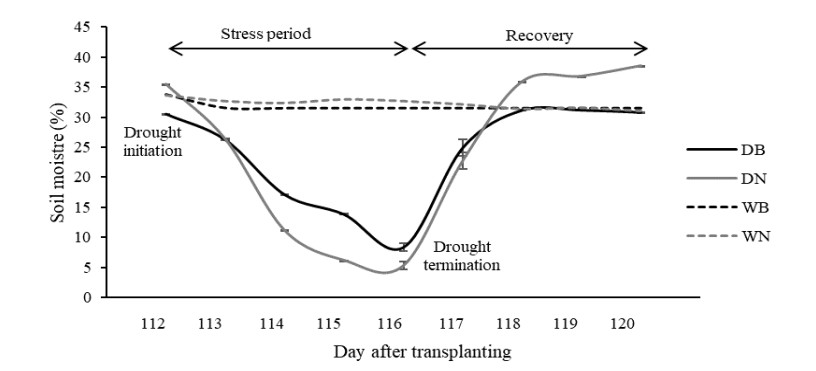









 DownLoad:
DownLoad:
